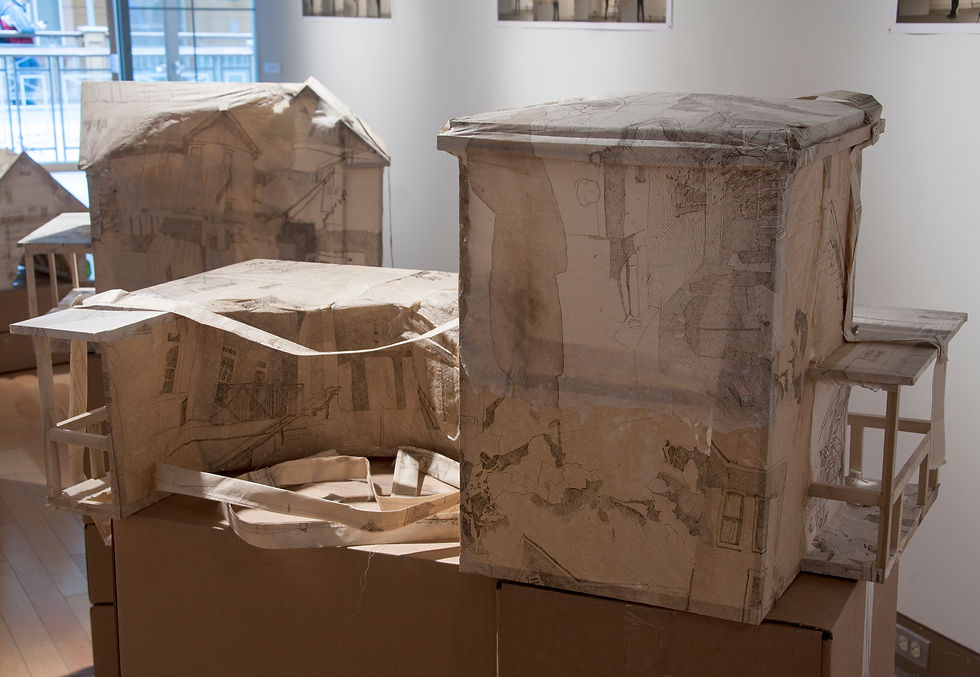Joey Behrens




While earning her graduate degree in Printmaking at Ohio University Joey began
making her own paper, experimenting with various fibers, to create paper sculptures. She created work that relied heavily on the beauty, strength, and apparent vulnerability of handmade paper. She has worked with several different fibers and is particularly drawn to Flax. While in residence at the Morgan Conservatory Joey will continue with these experiments and is particularly interested in exploring how, due to its high rate of shrinkage, flax will influence – in actuality shape forms as it dries over them.
Artist Statement
Involving a variety of forms such as drawing, printmaking, and actions, my artistic practice is driven by an interest in the structures and systems that compose the mundane backdrop of everyday life. My work focuses on the relationship between people and the built environment. I am fascinated with the idea of the “City” and see it as a manifestation of the complex relations between the environments we build and us. In The Practice of Everyday Life, French Theorist Michel de Certeau correlates the act of walking the city with speaking language out loud. His poetic and nuanced description has influenced my understanding of our interconnection with the built environment. Just as we shape the city it shapes us.
I strive to create work that brings the backdrop of life to the forefront in ways that cause the Everyday to bump up against Art. To do this I employ a variety of tactics. Increasingly, the production of my work involves actions designed to interrupt normal expectations and spark conversations that draw from and are carried out by a diverse community of participants. Architecture Embodied and the resulting ongoing project Shifting Sites are two projects that utilized walking as a tactic in the production and dissemination of a body of work that examined notions of place, community, and our relationship to the built environment. Architecture Embodied involved 13 volunteers, each of whom took me on a walk in order to share their sense of Athens, Ohio. The structures and landscape I was shown, along with what I gleaned from the individual during our conversation, and my own observations of place became the basis for the wearable sculpture I built for each volunteer. The volunteers wore their sculptures as they walked separate routes through various Athens neighborhoods to converge in the gallery where the sculptures were then installed.
Constructed from handmade papers stretched over wooden frames, the sculptures’ seductive tactile qualities underscore the sense of fragility they project. You want to get close—to examine the intricate marks, to feel the surface and test its tautness. And yet, the very qualities that elicit this desire simultaneously remind us of the object’s vulnerability. While not heavy, the sculptures require a small amount of effort to be worn, heightening the wearer’s awareness of the object and the spaces and structures around them as they navigate through the everyday environment.
My practice is a response to the intuitive and concrete knowledge I acquire through the experience of being in the world. My drawing, for example, involves making marks that correlate with how my eye reads the construction and organization of a space by moving through it. I draw buildings and spaces that I have observed directly, so the act of drawing creates a kind of muscle memory, one that is both perceptual as it is based on looking and physical as it is the result of my body moving through a space.
As I practice it, art is a relationship that exists in the space between author; object, image, or action; and audience. Like conversation, this space is neither bound by my intentions nor simply received by the audience. Its dimensions are discovered through an exchange of energy that, at its best, opens up new possibilities and potentials from which we view the world around us.



